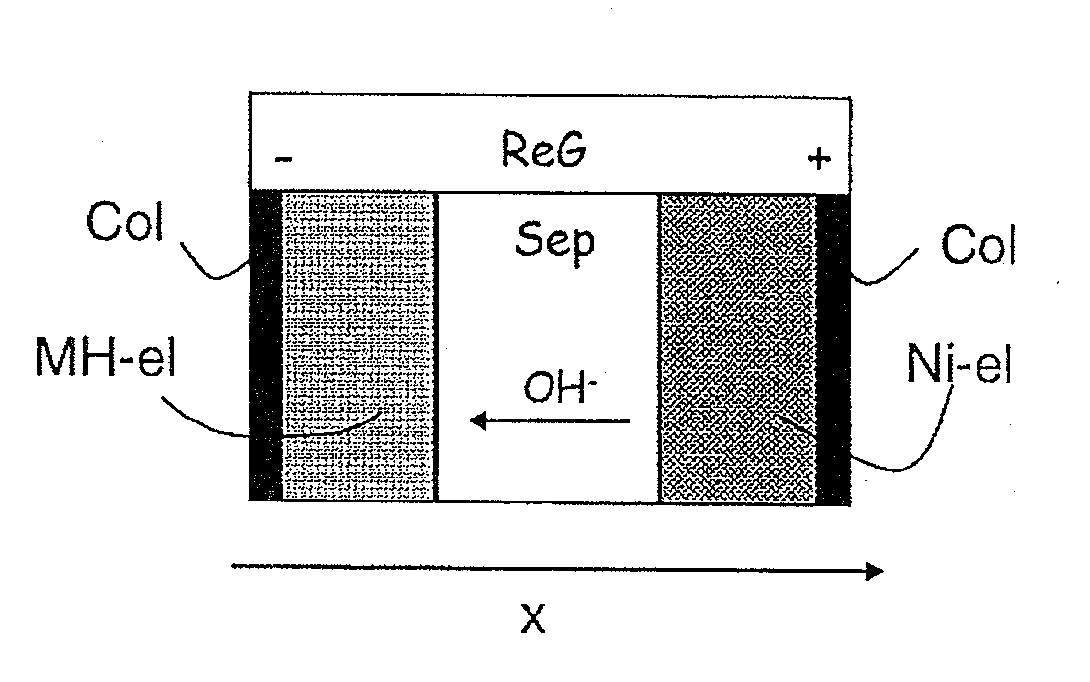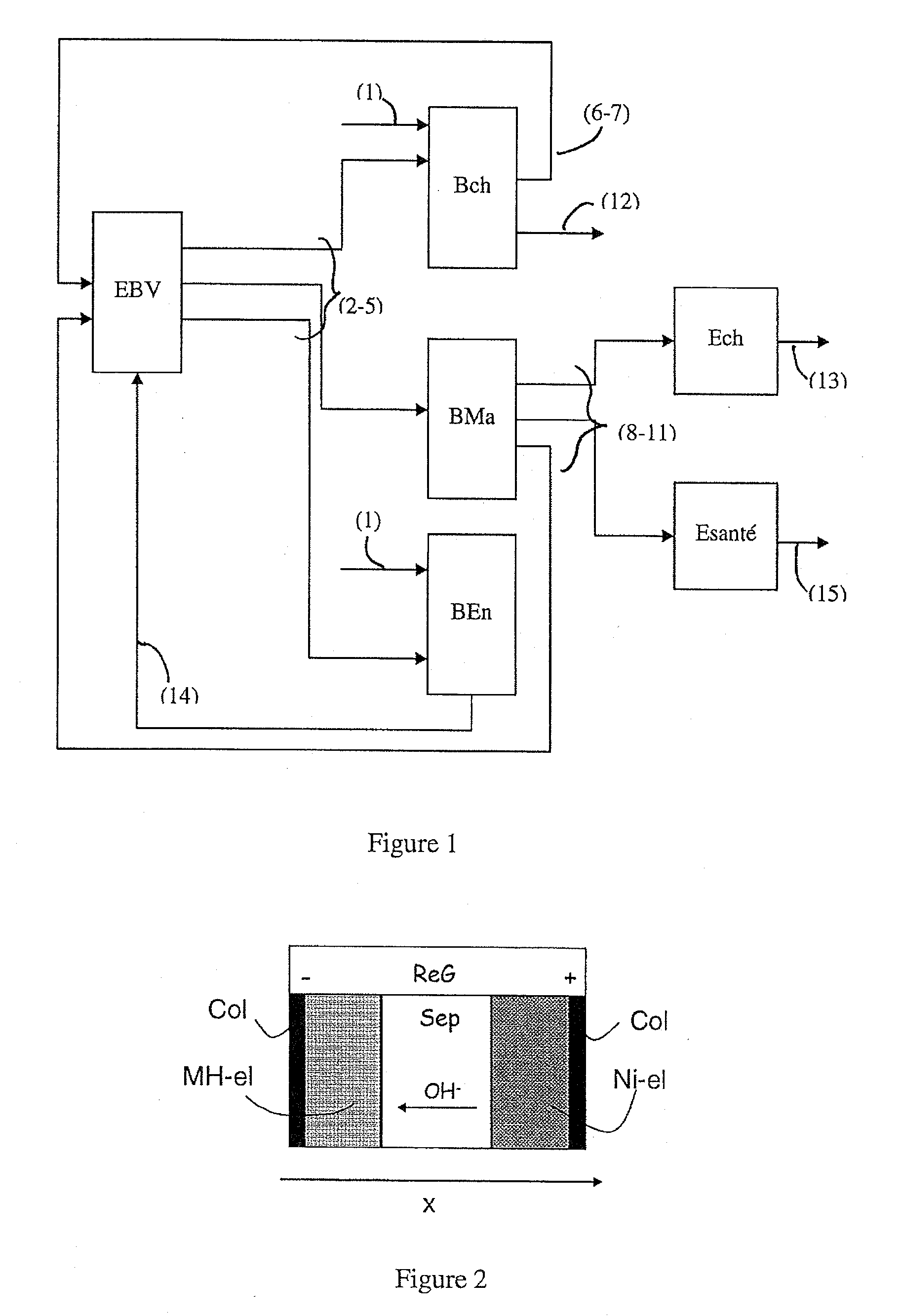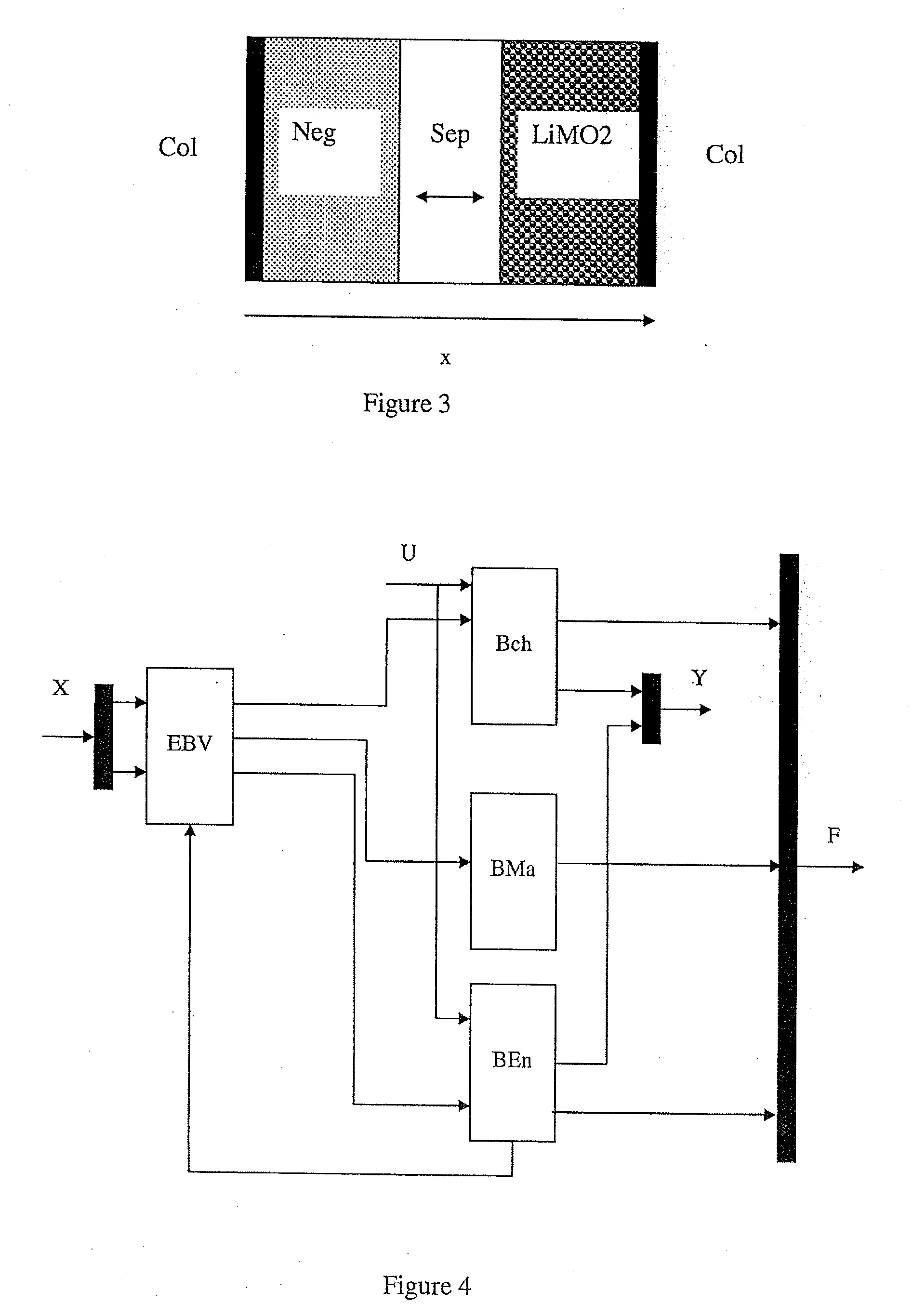Method of estimating the non-measurable characteristics of an electrochemical system
a technology of electrochemical system and characteristic estimation, applied in hardware monitoring, analog computers, analog and hybrid computing, etc., can solve the problems of estimation errors, dependencies are in fact much more complicated, and the performance of batteries during their life degrades gradually
- Summary
- Abstract
- Description
- Claims
- Application Information
AI Technical Summary
Problems solved by technology
Method used
Image
Examples
Embodiment Construction
[0094]FIG. 1 diagrammatically shows the model according to the method of the invention. The references have the following meaning:
[0095]EBV is a processor for calculating the Butler-Volmer equations (Equation 2) that describe the kinetics of the electrochemical reactions;
[0096](1): Iapp is the current applied to the cell;
[0097](2): Jz is the current density for chemical reaction z;
[0098](3): Jz+k is the current density for chemical reaction z+k;
[0099](4): Jz+k+1 is the current density for chemical reaction z+k+1;
[0100](5): Jn is the current density for chemical reaction n;
[0101]Bch is a processor for calculating the charge balance representing the equations of the electric charge balance;
[0102](6): Φpos is the overpotential at the interface of the positive electrode material;
[0103](7): Φneg is the overpotential at the interface of the negative electrode material;
[0104]BMa is a processor for calculating the material balance representing the material balance and mass conservation equa...
PUM
 Login to View More
Login to View More Abstract
Description
Claims
Application Information
 Login to View More
Login to View More - R&D
- Intellectual Property
- Life Sciences
- Materials
- Tech Scout
- Unparalleled Data Quality
- Higher Quality Content
- 60% Fewer Hallucinations
Browse by: Latest US Patents, China's latest patents, Technical Efficacy Thesaurus, Application Domain, Technology Topic, Popular Technical Reports.
© 2025 PatSnap. All rights reserved.Legal|Privacy policy|Modern Slavery Act Transparency Statement|Sitemap|About US| Contact US: help@patsnap.com



